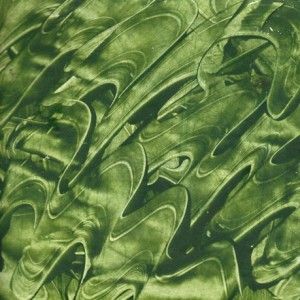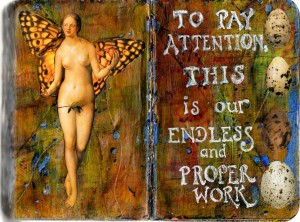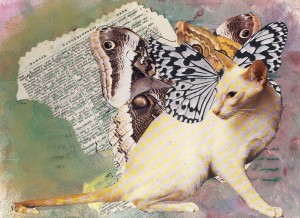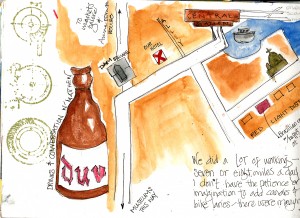Tag: Book and Paper Arts
Paste paper is a stunning way of creating original designs for use in hand-bound books, handmade boxes, wrapping, and other projects. Basically, it is the art of covering a page in a coat of colored paste made of rice or other starch. (I use a mixture of fine flour and corn starch). Patterns are then made by combing, stamping, or simply “drawing” with fingers.As a decorative paper technique, paste paper dates back to the late 16th century when it was used for making playing cards. Its heyday came in the 1760s when it was popularized by single women living in a German Moravian community as a way to support themselves. Their colorful paste papers were in high demand by bookbinders and for a variety of other uses.
These are some of my paste papers. Keep checking in: I will be adding tutorials on how to make your own soon.
An altered book is simply the art of transforming something forgotten into something meaningful. These pages are in an old French home medical book Hygiene du Malade dated 1921 that had been passed over in a flea market.
Acrylic glaze, acrylic image transfer, [read more]
Original works. Collage cat images, miscellaneous paper wings, vintage dictionary pages, chalk pastel, rubber stamps, embossing powder, found maps.
Last fall I visited Amsterdam with Gabriel and my old friend and sometime traveling buddy Matthew. It is a beautiful city and a great one for walking, although I almost got run over by bicycles. What looked to me exactly like a sidewalk was in reality a bike highway and it was only by dint of furious handlebar bell ringing and shouts that I narrowly avoided being smashed several times. We mainly went to see the museums: the newly restored Rijksmuseum, the Van Gogh museum, and modern works at the Stedelijk. Photos will be in a future post, but here are some of my journal pages from the trip.

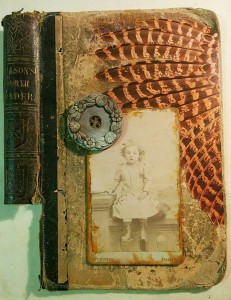
 Follow
Follow
